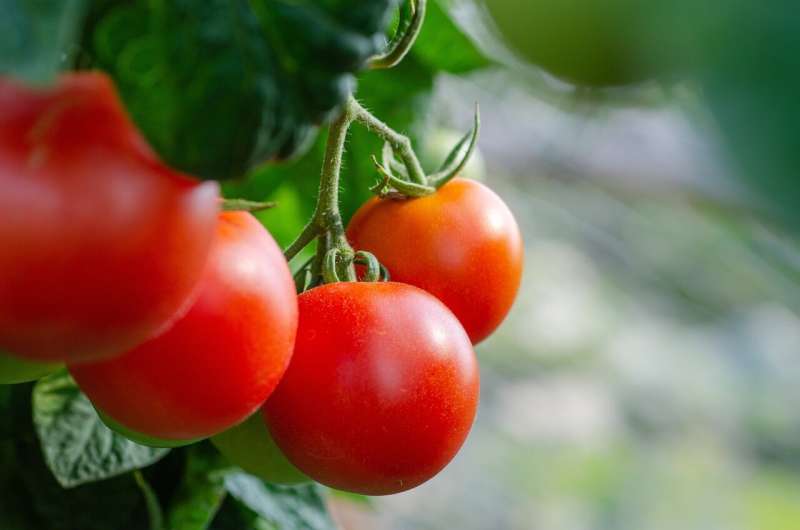This article has been reviewed according to Science X's editorial process and policies. Editors have highlighted the following attributes while ensuring the content's credibility:
fact-checked
peer-reviewed publication
trusted source
proofread
New discoveries regarding tomato hormones can increase total yield

In an article published in the journal Proceedings of the National Academy of Sciences, researchers at the University of São Paulo's Luiz de Queiroz College of Agriculture (ESALQ-USP) in Brazil describe for the first time how strigolactones, plant hormones discovered several decades ago, control flowering and fruiting in the tomato (Solanum lycopersicum). The findings of their study point to a new opportunity for management of fruiting time and could have a significant impact on total yields for this crop.
Derived from carotenoids, strigolactones are a relatively new group of phytohormones, identified as such only in 2008. Their importance to the tomato plant's development, its stress response and its interaction with microorganisms in the rhizosphere (the soil in which the roots grow) has been described in the scientific literature, but their role in the reproduction process was hitherto unknown.
Now in this new study, scientists at ESALQ-USP were able to demonstrate this function and explain it in more detail using techniques such as sequencing and processing of mRNA data, gene transcript quantification by qRT-PCR, mass spectrometry, and statistical and functional analysis.
To this end, they analyzed and compared two groups of plants: one group had been genetically modified to impair strigolactone production, while the other comprised plants with a synthetic version of the phytohormone, which they found to promote faster and better flowering, which yielded more fruit.
The researchers also identified details of how the mechanism functions.
"We showed that strigolactones control flowering in the tomato by regulating the microRNA319 pathway and levels of gibberellin [regulators of plant growth and germination]," said Fábio Tebaldi Silveira Nogueira, co-author of the article and principal investigator for the Thematic Project of which the study was part. He is a researcher at the Plant Development Molecular Genetics Laboratory in ESALQ-USP's Department of Biological Sciences.
"When strigolactone levels in leaves and meristems increase, the plant tends to reduce gibberellin levels and raise levels of this microRNA."
Economic interest
The results obtained by the researchers can have a direct impact on tomato crop management and yields.
"The findings clearly show that the plant flowers more easily in the presence of strigolactone, with numbers of flowers and fruit increasing considerably. This means we can now rely on a novel phytohormone to control flowering time," Nogueira said.
Next steps will include investigating whether other microRNA pathways and hormones interact and influence the plant's development, increasing fruit yield and size, he added. The researchers also plan to test the effects of strigolactone on other crops of economic interest, such as soybeans and corn.
The study was conducted in partnership with scientists affiliated with StrigoLab, an Italian startup based at the University of Turin in Italy; with the same university's Plant Stress Laboratory, led by Francesca Cardinale, last author of the paper; and with Palacký University's Growth Regulator Laboratory in Czechia and the Czech Academy of Sciences' Institute of Experimental Botany.
More information: Ivan Visentin et al, Strigolactones promote flowering by inducing the miR319- LA - SFT module in tomato, Proceedings of the National Academy of Sciences (2024). DOI: 10.1073/pnas.2316371121
Journal information: Proceedings of the National Academy of Sciences
Provided by FAPESP





















